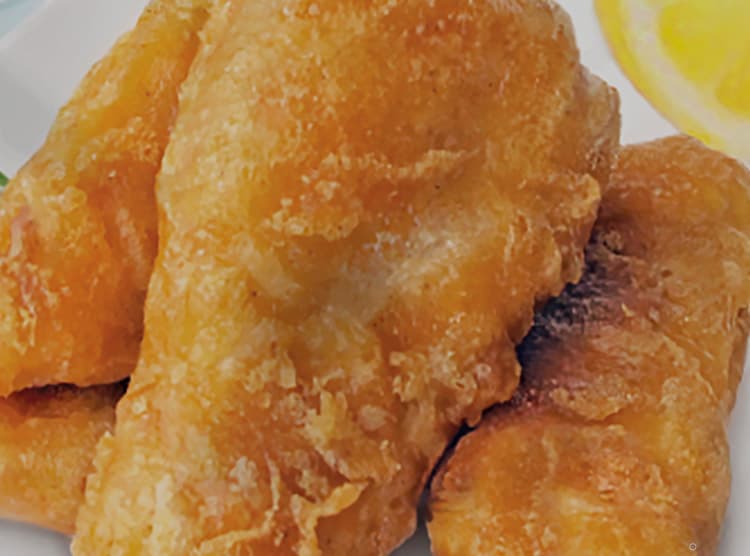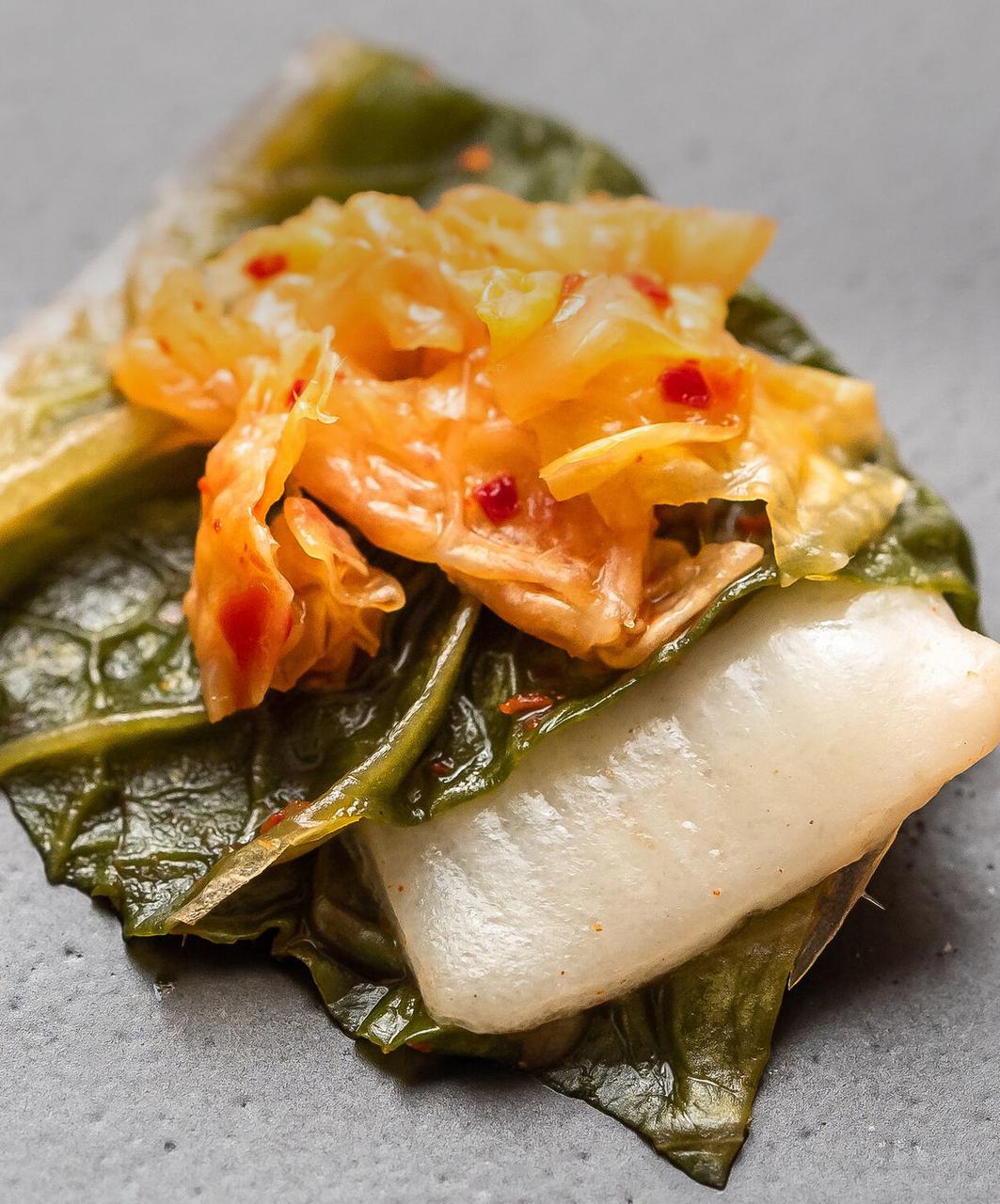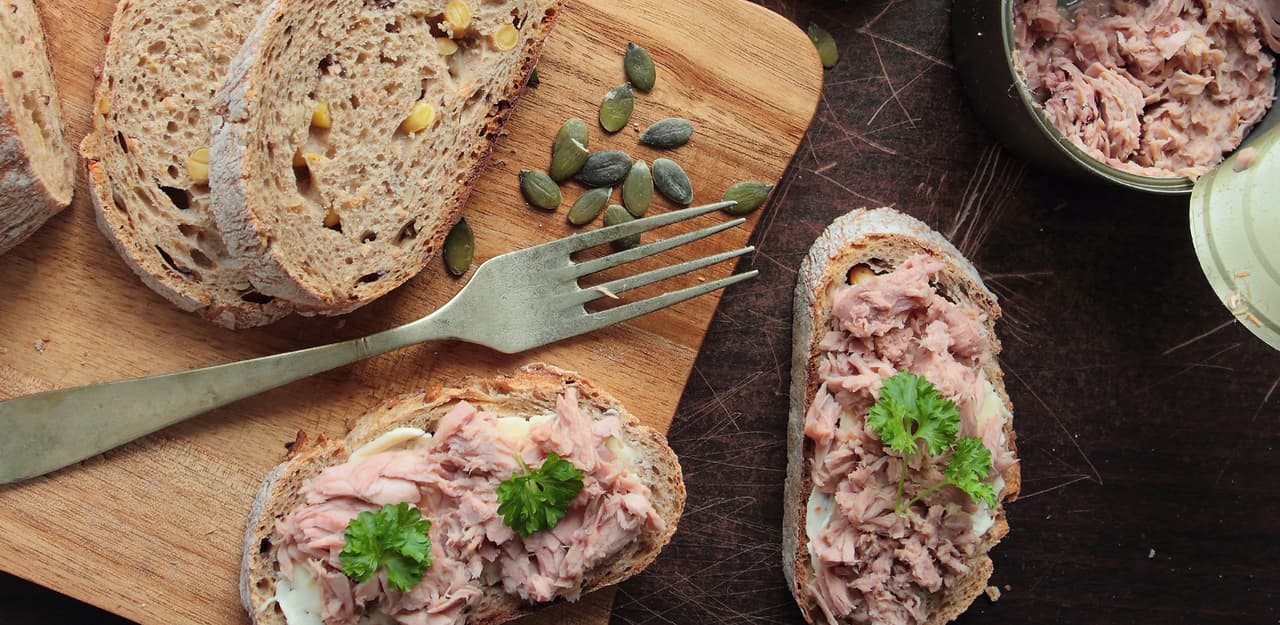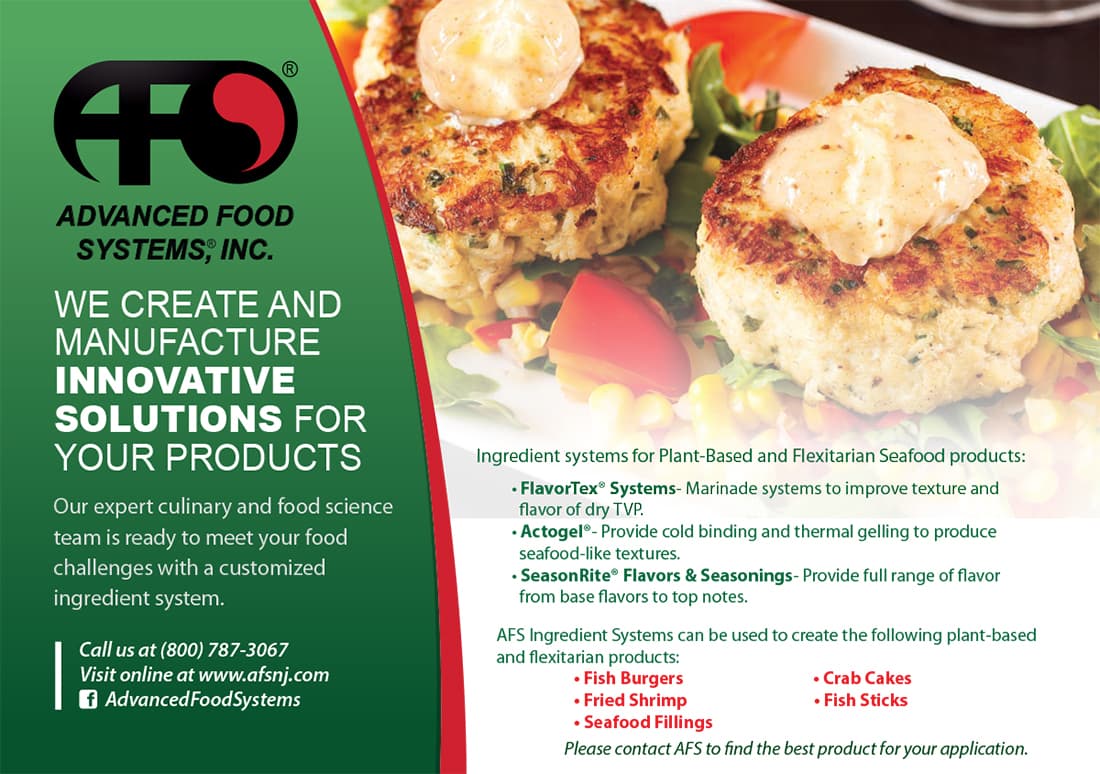INGREDIENT
challenges
No Fishing Zone
PART 1: With nearly all waterways overfished,
seafood alternatives are riding a wave of popularity.
Consumer interest in plant-based eating continues to drive product innovation. A new generation of plant-based meat alternatives boasting a taste, texture, and appearance that ever more closely approach the animal-derived version have burst onto the scene. Meat, poultry, and seafood analogs transcended their debut in restaurants and are now available in supermarkets everywhere, often positioned next to packages of the real thing.
The plant-based seafood category shows potential for continued accelerating growth. Launches of plant-based seafood alternatives had a compound annual growth rate (CAGR) of 44% in North America and 15% globally over the 2016-2020 period, according to data from Innova Market Insights. Then, the category experienced a whopping 27% jump in 2020, to $7B annually, according to a study by the Good Food Institute and Plant-Based Foods Assn.
“We’re seeing more and more big-box retailers adding plant-based options to their offerings, making it so consumers are getting more exposure to plant-based products, and overall normalizing the segment,” says Tal Golan, business development specialist of Sophie’s Kitchen, which offers vegan versions of smoked salmon, tuna, shrimp, and crab cakes. This exposure in large retail outlets, along with the growing awareness of vegetarianism/veganism and improvements to ingredients used in plant-based products, can help the popularity of plant-based seafood to continue to expand in the future.
Photo courtesy of: Plant Based Seafood Co.
By KAREN NACHAY, MS, Contributing Ingredient Technology Editor

While flavor matching is extremely important, the texture and appearance of plant-based seafood seals the deal on a successful analog. Photo courtesy of: New Wave Foods, Inc.
Emerging Category
Plant-based seafood offers a dietary choice for those who follow vegetarian and vegan diets, are allergic to fish or shellfish, or want to reduce their consumption of animal products. Consumers, especially younger ones, are more open to trying novel options, and plant-based seafood products offer the variety they seek. The products also appeal to consumers concerned about environmental and sustainability issues around overfishing and ocean pollution.

Vegan fish and seafood analogs typically use a combination of different plant proteins to obtain nature-identical textures and flavors. Photo courtesy of: Conagra Brands, Inc./Gardein
With such a wide-open field, plant-based seafood options are diverse. Four examples are Atlantic Natural Foods, LLC’s Loma Linda Tuno tuna analog, sold in pouches and cans; Danish company Jens Møller Products, ApS’s Cavi-Art, a seaweed-based caviar naturally colored to look like roe from different fish species; Plant Based Seafood Co.’s whole P&D shrimp and scallop analogs; and Austrian 3-D food printing start-up Revo Foods GmbH’s “Salmon With Attitude” line. The latter’s line includes faux smoked salmon slices and spreads.
“Each marine animal duplicated in a plant-based version has its own unique qualities that must be mastered individually—and successfully—if consumers are going to make the switch,” says Monica Talbert, co-founder and CEO of The Plant Based Seafood Co., makers of Mind Blown plant-based shrimp, lobster crab cakes, and scallops.
Another Option
Sometimes, the best alternative to real seafood is…real seafood. While still in its infancy, the cell-cultured seafood industry is growing with astonishing speed. Earlier this year, BlueNalu, a frontrunner developing seafood directly from fish cells, received another $60M in financing, allowing it to take occupancy of a nearly 40,000 square foot facility where it plans to create a
GMP-inspected pilot facility that will enable small-scale production during the coming years. According to company president and CEO Lou Cooperhouse, the XPRIZE Feed the Next Billion semi-finalist company will initially focus on bluefin tuna for its large-scale commercialization. He also noted
how price parity is more readily in reach as BlueNalu’s products will result in nearly 100% yield, as just the skinless, boneless filet is being produced and many of the costs (as well as risks and food safety issues) associated with mainstream seafood production are drastically reduced and even eliminated when it is produced in an aseptic, controlled, and traceable environment, without harmful pollutants or contaminants, and without traveling long distances to reach processors and consumers. Technology is about to keep the promise of guilt-free, real seafood becoming a ready choice for consumers.

Photo courtesy of: BluNalu, Inc.

The use of plant-based proteins and texturizers has brought many seafood analogs to parity with their original seagoing counterparts. Photo courtesy of: DSM, Inc.
There’s a range of legumes, seaweed, flavors, starches, and gums that produce the textures, flavors, and appearances of the distinct seafood species in plant-based formats. For example, pea protein and wheat protein are the main components in plant-based tuna from Nestlé Food Co.’s Sensational Vuna alt-tuna product, while seaweed-derived ingredients give flavor and improve the texture in vegan caviar from IKEA.
Flavorings give products characteristic seafood tastes and mask off flavors from other ingredients. They include yeast extracts and savory flavors to boost umami taste and richness. Seaweed helps create seafood flavors formulated to give the distinct tastes of different types of fish and shellfish species, while vegan flavors derived from algal oil provide the flavors of oily dark fish and fleshy white fish.
A proprietary blend that includes mung bean protein and seaweed-derived ingredients gives the characteristic snap and texture to plant-based shrimp from New Wave Foods. “Just as flavor is extremely important, the texture and appearance of the plant-based shrimp is critical, so we focused heavily on creating a product that will deliver across all aspects,” says Michelle Wolf, co-founder and CTO of New Wave Foods. “We worked with a range of experts to ensure we are producing a plant-based option that is virtually indistinguishable from ocean shrimp. Our proprietary product came to life through a close collaboration between top-tier chefs and renowned R&D experts.” End of Part 1
August 2021

